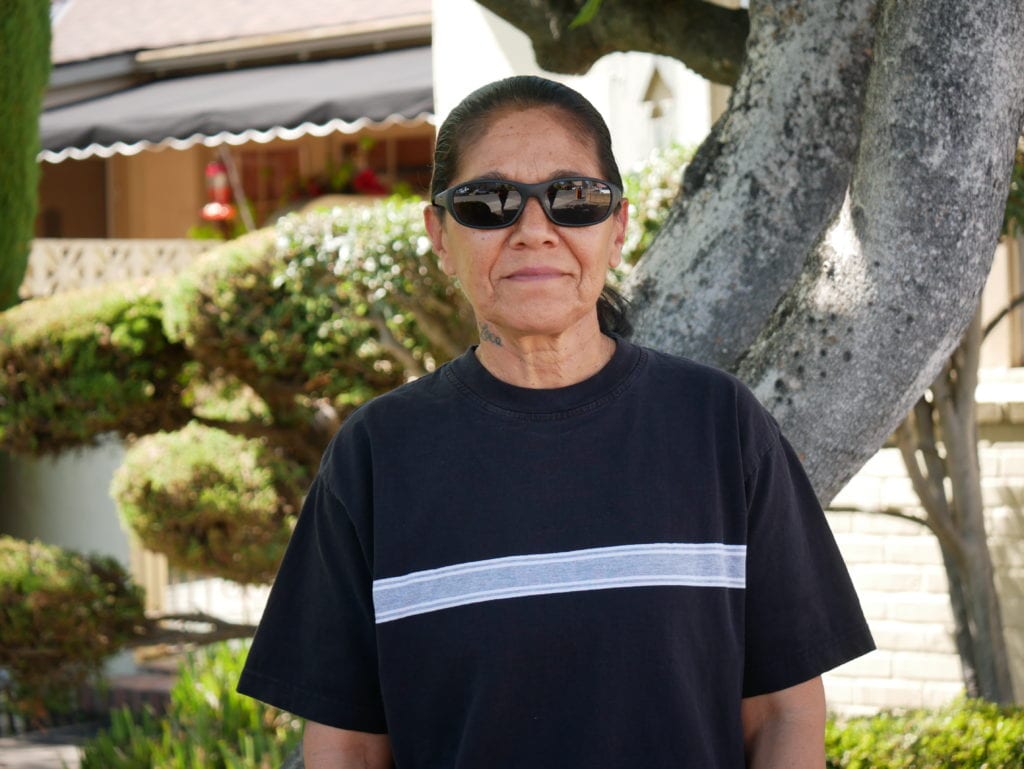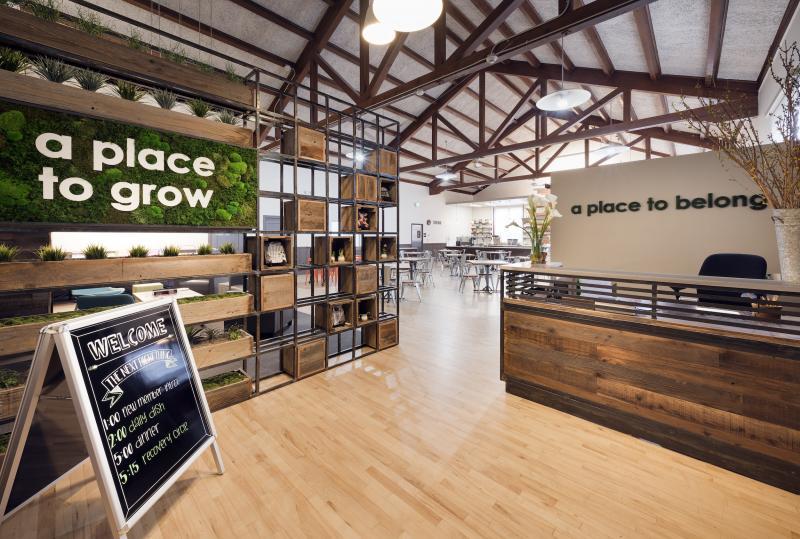The minute Rosanna Jacome was introduced to Recovery Café in Downtown San Jose four years ago, she knew she found a place of respite from the addiction, trauma and abuse she had endured for the majority of her life.
“It’s everything all in one: You get the friendships, the smiles, the support, information and classes,” said Jacome, who recently celebrated her 11-year sober birthday. “I got most of my recovery from the cafe. I found a place that I finally belonged and I found a place that I feel like I want to live. It was like a new life, a new beginning.”
Recovery Café, next to San Jose City Hall on South 5th Street, opened its doors April 2016 for that exact purpose – to provide a healing community for people in recovery from addiction, homelessness and mental health challenges. Today it has 180 active members, seeing anywhere from 60 to 100 people a day.
But now complying with Santa Clara County’s shelter-in-place order to combat the coronavirus crisis, there’s been a large hiccup in services. Even though Recovery Café is deemed an essential business, the list of resources the cafe can physically provide has been slashed, including in-person recovery meetings.
Jacome has “attended” a few Zoom meetings since the March 17 mandate, and checks in with friends, her sponsor and the cafe’s program manager, Lisa Willmes, once a week. While she said something’s better than nothing, it’s just not the same.
For now, Jacome tries to take each day an hour at a time, telling herself: “Whatever you do, just don’t drink.” Whether heading to the store or taking a walk, her efforts to stay sober have proved more difficult than usual.
“The last couple of weeks I’ve been wanting to drink and I don’t know why – it could be everything all bundled up,” Jacome said. “I miss the cafe terribly and it’s just not the same. It’s just missing a piece of the puzzle. What good is a puzzle if that one piece is missing?”


Jacome’s not alone experiencing an increased desire to drink while stuck indoors.
According to the San Francisco Chronicle, Bay Area residents as a whole drank 42 percent more than usual during the first week of sheltering in place. This comes as no surprise, especially as local online retailer Wine.com has seen spirit sales alone surge 400 percent and restaurants and bars can now sell alcohol to-go.
But this increase in drinking and lack of contact, some medical professionals say, can be especially hard for those coping with addictions to drugs and alcohol. Anecdotes from addicts at Recovery Café detailed how isolation exacerbates substance abuse, and Harvard Medical School recently published resources to maintain recovery efforts while coping with social distancing.
Recovery Café found that 97 percent of its members said going to the cafe helped maintain relapse prevention skills. While 27 percent said they had relapsed since first stepping foot inside, 76 percent said cafe attendance reduced the severity or frequency of relapses.
Now with in-person meetings canceled and community gathering spaces closed, Willmes said the interruption of services coincides with more people at the cafe feeling depressed from the isolation. But she hopes their history of connection is able to continue through Zoom meetings, despite its physical hurdles.
“To kind of shift into this ‘loving at a distance’ relationship instead of close and embracing support, it’s definitely been a trip for us,” Willmes said. “But when a member is feeling triggered or feeling like they might relapse, they have someone at the cafe that they can call and reach out to and get that personal support. We’re seeing people really rely on that one-on-one relationship.”
While working to keep members focused on sobriety, Recovery Café has also been nourishing folks from a distance with food and essential toiletries, such as toothbrushes, toothpaste, hand sanitizer and rolls of toilet paper. Since March 24, the organization’s six staff members and a handful of volunteers have prepared healthy meals from noon to 2 p.m. Tuesday through Saturday.
Willmes said local nonprofits like Second Harvest Food Bank of Silicon Valley and Hunger at Home have been vital partners to their culinary team, while volunteers have been donating supplies in droves and delivering meals to homes of Recovery Café members, as many are considered high-risk for the virus due to pre-existing conditions.
“I would say this is probably the most community support that I’ve seen coalesce around an issue,” Willmes said. “There are folks that just have big hearts. They see the need and they’re running to provide the support.”
Maiki Ortega was one of the dozens of people standing in a socially-distanced queue in front of the cafe Friday morning. She was homeless when she first came to Recovery Café, but now a year into being housed, she said she keeps coming back – even despite increased concerns of contracting COVID-19 – to see friends all striving to better themselves.


Lining up before lunch was served, her goal was to get one of the 100 hot meals prepared that day, before sandwiches became the only option left.
“You don’t have to be a member because of the crisis right now,” Ortega said. “As word of mouth spreads, more and more people have been coming.”
Unfortunately, the growing number of folks benefitting from food distribution the past three weeks will now have to find other resources. The cafe is taking a two-week break from offering meals after someone close to a team member tested positive for COVID-19 this week.
Willmes said that time will be spent coordinating how else the cafe can serve the most vulnerable in the community, especially as the distribution unintentionally led to more people congregating outside its doors.
“We’re trying to figure out what makes sense now,” Willmes said.
But she isn’t deterred from figuring out what those next steps look like. In fact, her staff and more than 50 volunteers will be figuring out how best to return to their focus of connecting, teaching and supporting their members. Initial ideas include bolstering their online presence with YouTube videos and offering more Zoom meetings.
“Now I think this will allow us to revisit our mission and create that healing community,” Willmes said. “It’s giving us an opportunity to go back to our core.”
Follow along with San José Spotlight’s real-time coronavirus coverage on our LIVE BLOG here.
Contact Katie Lauer at [email protected] or follow @_katielauer on Twitter.



Leave a Reply
You must be logged in to post a comment.